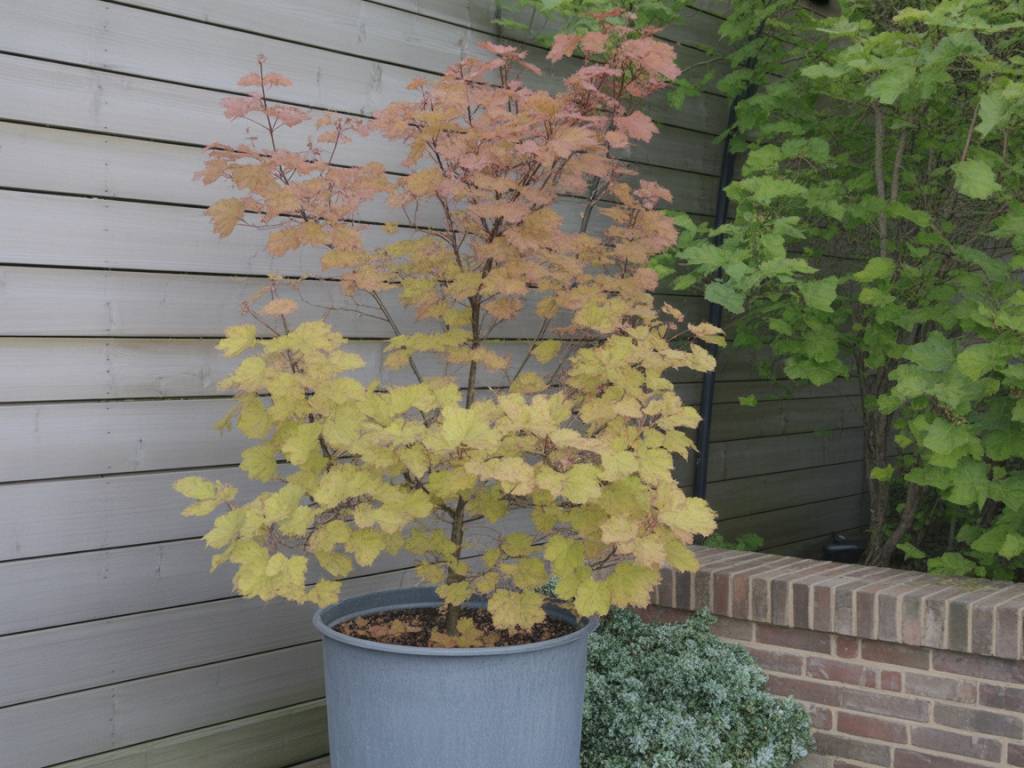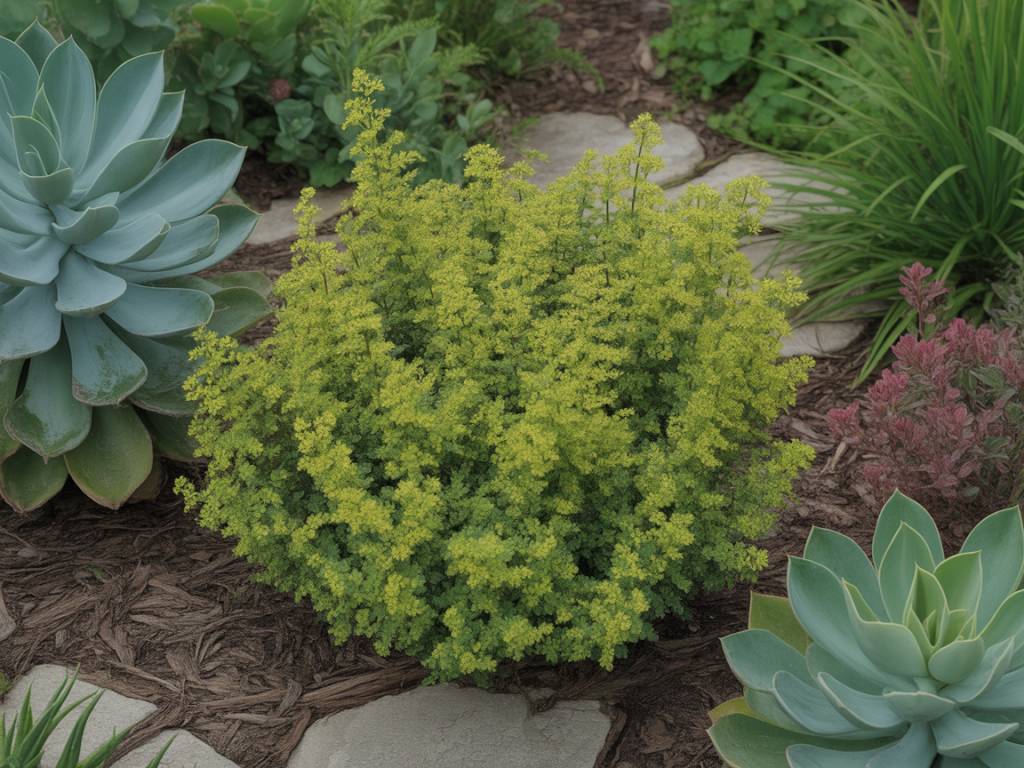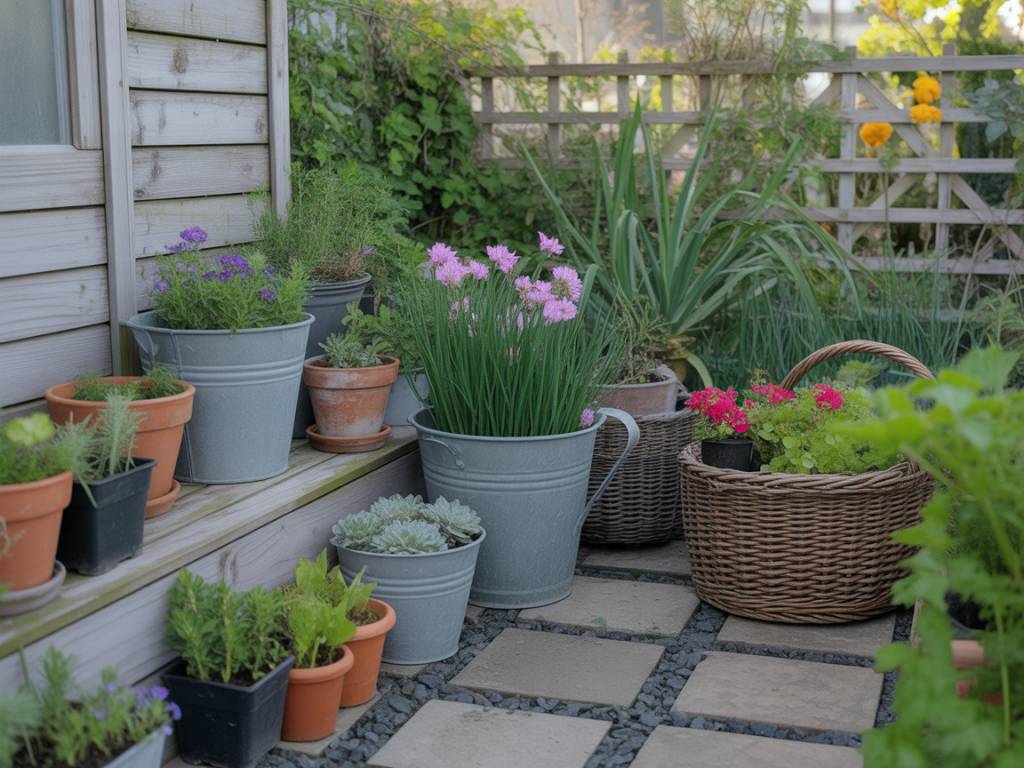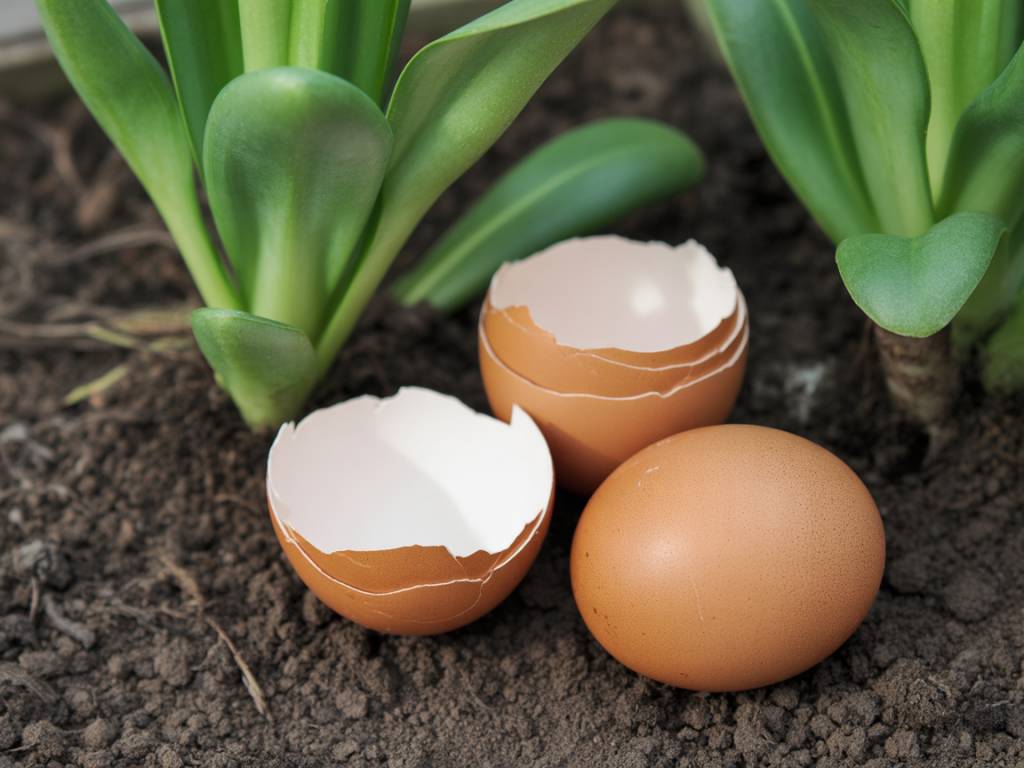Why an Acer in a Pot is Perfect for a Small Patio
There is something almost magical about an Acer tree in a pot. Even on the tiniest patio or balcony, its delicate leaves catch the light, changing colour with every breeze and every season. It’s like having your own miniature forest, right outside the back door.
If, like me, you don’t have acres of land but still dream of autumnal fire, spring freshness and summer dappled shade, an Acer in a container is a wonderful companion. With a little care, it will reward you with stunning colour, graceful structure and a surprisingly long life.
Let’s walk through how to choose, plant and care for potted Acers, so that your small patio can glow with the same quiet beauty as a woodland glade.
Choosing the Right Acer for a Pot
Not all Acers are equally suited to container life. The good news is that many of the most beautiful Japanese maples are naturally compact and thrive in pots.
Look for:
- Slow-growing or dwarf varieties – These keep a modest size and won’t outgrow your space too quickly.
- Fine or lace-like foliage – Perfect for adding texture and movement on a patio.
- Good colour through the seasons – Spring flush, summer foliage, and fiery autumn tones.
Some lovely, pot-friendly varieties include:
- Acer palmatum ‘Little Princess’ – Compact, rounded, with fresh green spring leaves that turn golden and red in autumn.
- Acer palmatum ‘Shaina’ – Dense and bushy, with deep red foliage that holds its colour well in summer.
- Acer palmatum ‘Garnet’ – A dissectum type (lace leaf), forming a graceful mound of feathery red foliage.
- Acer palmatum ‘Katsura’ – Glowing orange-yellow new leaves in spring, soft green in summer, bright orange in autumn.
- Acer palmatum ‘Orange Dream’ – Vibrant lime and yellow in spring, softening in summer, then flaming orange in autumn.
On a small patio, a single Acer in a beautiful pot can be enough to create a focal point. If you have room for two, try pairing one green variety with one red for a lovely contrast.
Choosing the Best Pot: Size, Shape and Material
A happy Acer in a pot starts with the right home for its roots. A beautiful container is like a picture frame for your tree – both practical and decorative.
Think about:
- Size – Aim for a pot at least 35–45 cm in diameter and depth for a young tree. Larger is often better, as it buffers the roots from drying out and temperature swings.
- Drainage – Absolutely essential. Your pot must have generous drainage holes; Acers hate having “wet feet”.
- Material – Terracotta, glazed ceramic or high-quality, frost-proof plastic all work. Heavy containers help stabilise the tree in windy spots.
- Shape – A wide, slightly tapering pot (wider at the top) makes future repotting easier and gives roots room to spread.
On a small patio, you might be tempted by pretty but tiny pots. Resist the urge to squash an Acer into something too small. A slightly larger container will keep your watering duties manageable and your tree far healthier.
The Perfect Compost Mix for Container Acers
Acers like a soil that is rich, free-draining and slightly on the acidic side. In pots, they are completely dependent on what we give them, so it’s worth getting this part right.
A good basic mix is:
- 2 parts quality peat-free, ericaceous compost
- 1 part loam-based compost (such as John Innes No. 2 or 3)
- A generous handful of horticultural grit or perlite for drainage
This blend holds moisture without becoming waterlogged, and it keeps the pH gentle enough for Acers to take up nutrients properly.
If your tap water is very hard and alkaline, your Acer may eventually show signs of leaf burn or yellowing from lime in the water. In that case, using rainwater whenever possible will make a real difference.
How to Plant an Acer in a Pot
Planting your Acer is a little like settling someone into a new home. You want them comfortable, well-supported and not cramped.
Step by step:
- Cover the drainage holes – Place a piece of broken pot or a mesh over the holes to stop compost escaping while still allowing water to drain freely.
- Add a drainage layer – A shallow layer of coarse grit or small stones at the base helps prevent soggy roots.
- Part-fill with compost mix – Add your prepared compost mix, and lightly firm it down.
- Position the tree – Place the Acer in the pot so that the top of the root ball sits about 3–5 cm below the rim, leaving room for watering.
- Backfill – Fill around the sides with more compost mix, gently pressing with your fingers to remove large air pockets. Don’t bury the trunk; the soil should sit at the same level as it did in the original pot.
- Water thoroughly – Give the pot a deep watering to settle the compost around the roots.
- Mulch the surface – A light layer of fine bark chips or decorative gravel helps reduce evaporation and keeps the surface looking tidy.
Once planted, try not to move the pot too frequently. Acers prefer to settle into one spot and quietly get on with the business of growing.
Finding the Ideal Spot on a Small Patio
Positioning is one of the most important decisions you’ll make for your potted Acer, especially on a small patio where microclimates can be surprisingly intense.
Acers generally prefer:
- Light shade or dappled sun – Morning sun and afternoon shade works beautifully. Harsh midday sun, especially in summer, can scorch the delicate leaves.
- Shelter from strong winds – Wind easily shreds the thin foliage and can desiccate the tree. A corner near a wall or fence is often ideal.
- Avoidance of hot, reflective surfaces – Next to a south-facing wall or on very dark paving, temperatures can soar. If that’s your only option, extra shade and attentive watering are essential.
On my own patio, the Acers are happiest where they can just peek around a pergola post, catching the soft light of morning but protected at the hottest part of the day. Think about where you naturally like to sit with a cup of tea – often, your Acer will enjoy similar conditions.
Watering Acers in Pots: Keeping the Balance
Container life means your Acer cannot roam in search of moisture. Its entire world is the pot, and that world can dry out quickly, especially in summer.
Keep these points in mind:
- Check regularly – In warm weather, test the compost with your finger. If the top few centimetres feel dry, it’s time to water.
- Water deeply, not just a sprinkle – Give enough water so that it starts to run out of the drainage holes. This encourages deeper, stronger roots.
- Avoid constant sogginess – Standing in a saucer of water for days on end can suffocate roots. If you use a saucer, empty it after the pot has had a good drink.
- Reduce watering in winter – When the tree is dormant and the weather is cool, it needs less water, but never allow the compost to bone-dry completely.
In summer heatwaves, a potted Acer can dry out surprisingly fast. You might find yourself watering once a day in very hot weather. Mulching the surface and moving the pot slightly out of direct afternoon sun can ease the burden.
Feeding for Colour and Vigor
In a pot, nutrients are gradually washed away by watering. If your Acer is to keep producing lush foliage and glorious colour, it needs a gentle but steady supply of food.
A simple approach is:
- In early spring, as buds begin to swell, apply a slow-release fertiliser formulated for acid-loving plants.
- Alternatively, feed monthly from spring to mid-summer with a liquid ericaceous feed, diluted according to the instructions.
Acers prefer modest feeding rather than heavy, fast-acting fertilisers, which can encourage soft, sappy growth more prone to scorching. Think of it as a well-balanced diet rather than a sugar rush.
Seasonal Care for Stunning Colour
Part of the joy of an Acer on a patio is watching it shift with the seasons. With a few small adjustments throughout the year, you’ll help it shine in every phase.
Spring
- Watch for the new leaves unfurling – they’re often at their brightest now.
- Protect from late frosts if possible. A sheet of fleece overnight, or gently moving the pot closer to a wall, can save tender new growth.
- Begin your feeding regime once you see active growth.
Summer
- Monitor water closely; pots dry out quickly in warm weather.
- If leaves start to crisp at the edges, it may be a sign of too much sun, wind or inconsistent watering.
- Consider a light repositioning to a slightly shadier spot if heat is intense.
Autumn
- Enjoy the grand performance – this is when many Acers truly earn their place.
- Keep watering, but reduce feeding; the tree is beginning to slow down.
- Let fallen leaves lie on the compost surface for a short while; they add a natural touch before you tidy them away.
Winter
- Container roots are more exposed to cold than those in the ground. Wrap the pot with hessian, fleece or bubble wrap if very hard frosts are forecast.
- Ensure the drainage holes are not blocked; excess winter rain can be just as problematic as summer drought.
- Water occasionally in dry spells; even without leaves, the tree still needs a little moisture.
Pruning and Shaping Your Potted Acer
One of the charms of Acers is their natural grace; many need very little pruning. In a pot, the main aim is to keep a pleasing shape and remove any damaged or crossing branches.
A few gentle guidelines:
- Best time – Late autumn or winter, when the tree is dormant and leafless, makes it easier to see the structure.
- Keep it light – Remove dead or damaged wood first, then any branches that spoil the overall form.
- Avoid heavy cuts – Large wounds can bleed sap and stress the tree. Many small, thoughtful tweaks are better than drastic surgery.
When pruning, imagine you are revealing the tree’s natural character rather than imposing something unnatural. Often, it only takes a snip or two to open up the canopy and let the light dance through those beautiful leaves.
Repotting: When Your Acer Outgrows Its Container
Even a slow-growing Acer will eventually fill its pot. Repotting every three to five years keeps the tree healthy and prevents it from becoming root-bound.
Signs that it might be time:
- Water runs straight through the pot very quickly.
- Roots are circling densely around the base or appear on the surface.
- Growth has noticeably slowed, and the tree looks a little tired.
When you repot:
- Choose a pot one size larger, with good drainage.
- Gently tease out some of the outer roots and trim any that are circling tightly.
- Refresh with fresh compost mix around the root ball.
- Water well and keep the tree slightly shaded for a few weeks to recover.
If you don’t want your Acer to get any bigger, you can root-prune instead: remove the tree from the pot, trim some of the roots and old compost away, then replant in the same container with fresh mix. This is a slightly more advanced technique but very effective for keeping a cherished tree at a comfortable size.
Common Problems and Gentle Remedies
Even with good care, Acers in pots can sometimes sulk. Most problems show up first on the leaves, which act like little messengers.
- Leaf scorch (brown, crispy edges) – Often caused by strong sun, wind or irregular watering. Move the pot to a more sheltered, lightly shaded spot, and aim for more consistent moisture.
- Pale or yellowing leaves – May indicate nutrient deficiency or very alkaline water. Switch to rainwater if possible, and use an ericaceous feed.
- Wilting despite moist compost – Can be a sign of poor drainage or root problems. Check that water can escape freely from the pot; consider repotting into a better-draining mix.
- Blackened new shoots after cold snaps – Late frost damage. Snip off the affected tips once the risk of frost has passed. The tree usually recovers well.
Pests are rarely a major issue for Acers in pots, especially on a small patio. Occasionally aphids may gather on tender shoots; a quick spray with water or a gentle organic soap solution is usually enough to discourage them.
Designing a Colour Story Around Your Acer
Once your Acer is settled and thriving, you might find yourself wanting to build a whole little world around it. Even on a small patio, you can use pots to create layers, contrasts and seasonal interest.
Some ideas:
- Underplant the pot with gentle companions like trailing ivy, small ferns or heucheras. Choose colours that echo or contrast with your Acer’s foliage.
- Group with other containers – Perhaps a pot of spring bulbs at its feet, or a tall grass swaying nearby for movement.
- Play with textures – Smooth glazed pots, rough terracotta, soft mosses and feathery leaves all highlight the Acer’s delicate form.
On the smallest balcony, even a single Acer in a beautiful container can feel like a complete garden. Its changing colours mark the progress of the year, offering you a quiet sense of connection to the seasons, no matter how busy the world beyond your patio might be.
With thoughtful pot choice, the right compost, and a kind eye on water, shelter and light, your potted Acer will not simply survive – it will become a glowing, living artwork, enriching your outdoor space day after day.





